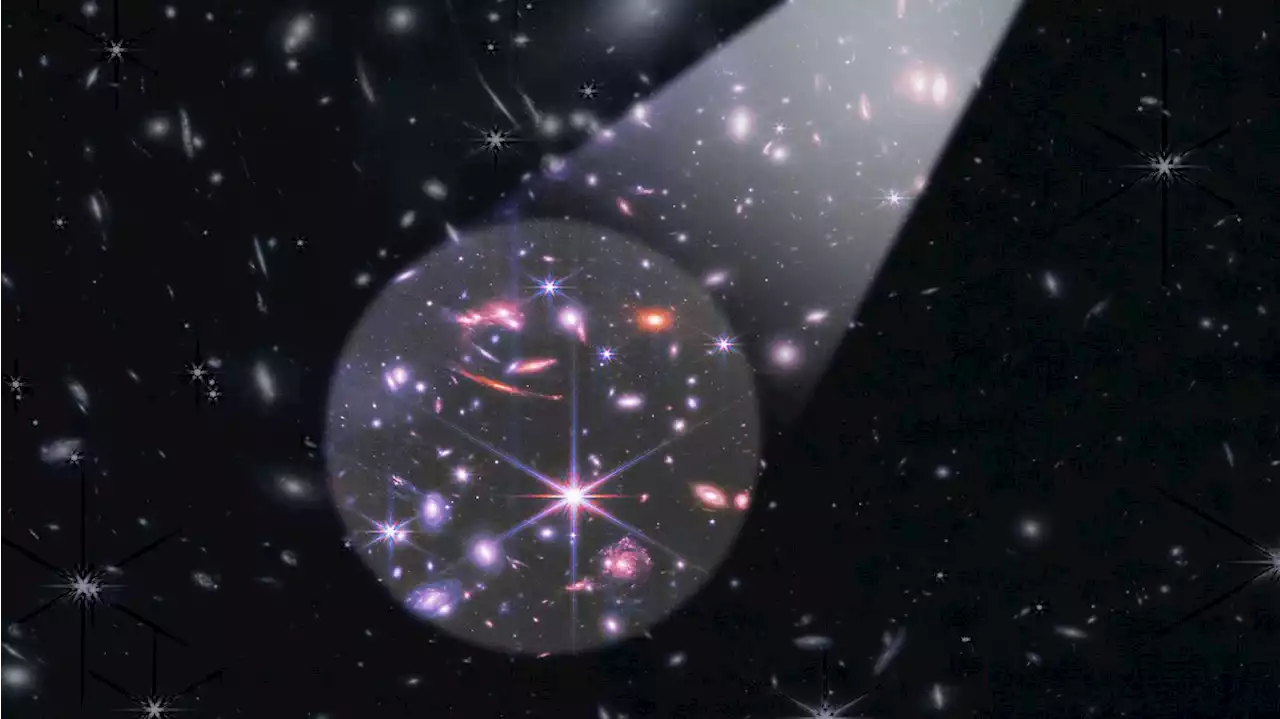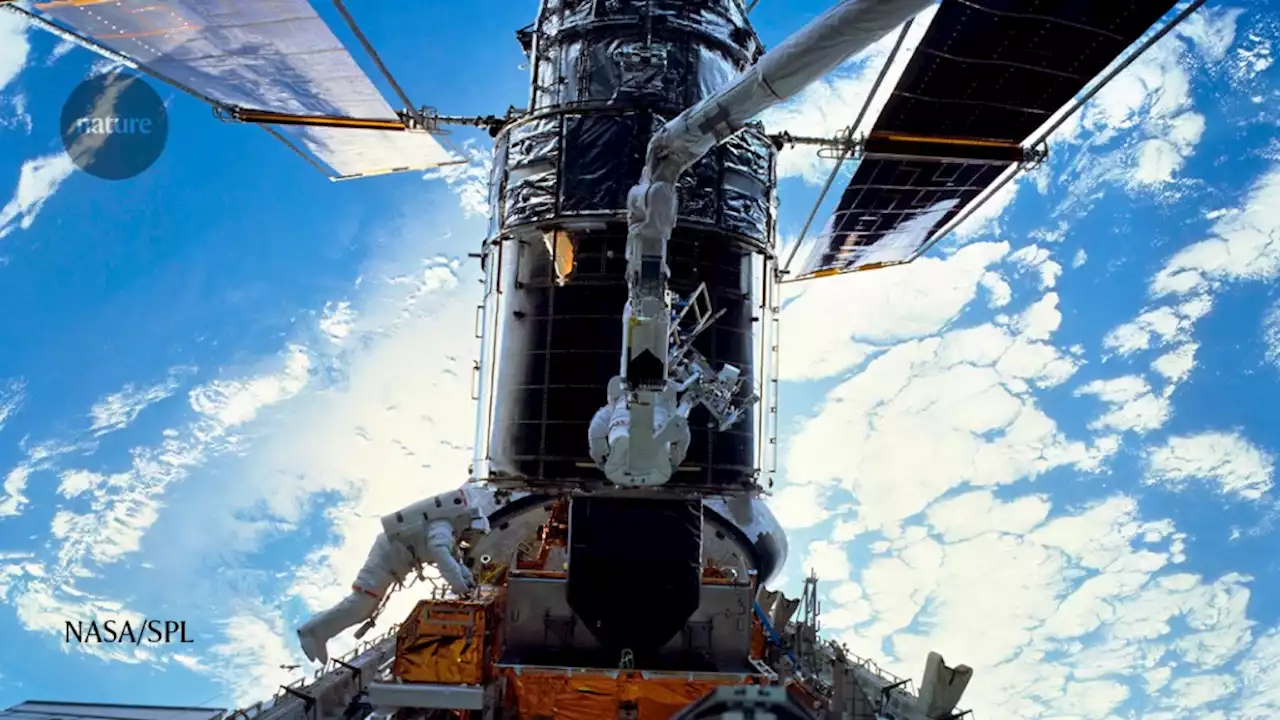JWST Sees Frozen Water, Ammonia, Methane and Other Ices in a Protostellar Nebula By Nancy_A
The discovery was made using a technique that studies how starlight from beyond the molecular cloud was absorbed by icy molecules at specific infrared wavelengths visible to Webb. Astronomers used light from a background star, named NIR38, to illuminate the dark cloud. JWST’s instruments were able to eek out the chemical fingerprints known as absorption spectra which can be compared with laboratory data to identify which ices are present in the molecular cloud.
In addition to simple ices like water, the team was able to identify frozen forms of a wide range of molecules, from carbon dioxide, ammonia, and methane, to the simplest complex organic molecule methanol. This is the most comprehensive census to date of the icy ingredients available to make future generations of stars and planets.
“We simply couldn’t have observed these ices without Webb,” elaborated Klaus Pontoppidan, Webb project scientist at the Space Telescope Science Institute, who was involved in this research. “The ices show up as dips against a continuum of background starlight. In regions that are this cold and dense, much of the light from the background star is blocked and Webb’s exquisite sensitivity was necessary to detect the starlight and therefore identify the ices in the molecular cloud.
Ireland Latest News, Ireland Headlines
Similar News:You can also read news stories similar to this one that we have collected from other news sources.
 The JWST is already upending our understanding of the early universeThe James Webb Space Telescope has been fully operational for less than a year, but its data is already hinting the early universe may have more galaxies — and more complicated galaxies — than many models have predicted.
The JWST is already upending our understanding of the early universeThe James Webb Space Telescope has been fully operational for less than a year, but its data is already hinting the early universe may have more galaxies — and more complicated galaxies — than many models have predicted.
Read more »
 Why the Hubble telescope is still in the game — even as JWST wowsNASA’s nearly 33-year-old observatory still has plenty of top science to do, and astronomers want to extend its lifetime.
Why the Hubble telescope is still in the game — even as JWST wowsNASA’s nearly 33-year-old observatory still has plenty of top science to do, and astronomers want to extend its lifetime.
Read more »
 JWST has seen building blocks of life in a dark, cold cloud in spaceThe James Webb Space Telescope has observed a frigid cloud of dust and gas where stars are forming, and it found frozen elements that are crucial for the development of life
JWST has seen building blocks of life in a dark, cold cloud in spaceThe James Webb Space Telescope has observed a frigid cloud of dust and gas where stars are forming, and it found frozen elements that are crucial for the development of life
Read more »
 Astronomers Complain That the JWST Is Producing Too Much Data, Too FastA new occupational hazard for astronomers just dropped — and it's all because the James Webb Space Telescope is, perhaps, a little too good at its job.
Astronomers Complain That the JWST Is Producing Too Much Data, Too FastA new occupational hazard for astronomers just dropped — and it's all because the James Webb Space Telescope is, perhaps, a little too good at its job.
Read more »
 JWST Heralds a New Dawn for Exoplanet ScienceThe James Webb Space Telescope is opening an exciting new chapter in the study of exoplanets and the search for life beyond Earth. (By Astro_Jonny)
JWST Heralds a New Dawn for Exoplanet ScienceThe James Webb Space Telescope is opening an exciting new chapter in the study of exoplanets and the search for life beyond Earth. (By Astro_Jonny)
Read more »
 Webb telescope peers into the frozen heart of a space cloud | CNNThe James Webb Space Telescope peered inside a wispy molecular cloud located 630 light-years away and spied ices made of different elements.
Webb telescope peers into the frozen heart of a space cloud | CNNThe James Webb Space Telescope peered inside a wispy molecular cloud located 630 light-years away and spied ices made of different elements.
Read more »
